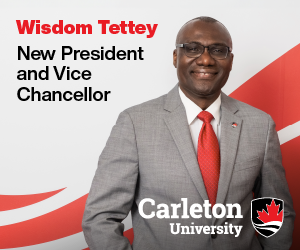How to invest in our PhDs? Through faculty renewal
Canada is hemorrhaging early career research capacity.

For a generation now, our PhD graduates have struggled with a shrinking academic job market in Canada, many of them in under-compensated teaching jobs with little support for research, or in non-academic positions. The decline in academic jobs has been addressed primarily as a graduate student issue: PhDs should be better informed about and trained for “alt-ac” careers, while departments should shrink their PhD programs to better match job availability. We frame the problem as one of supply rather than demand.
But we need to question this emphasis, particularly in light of the report of the Fundamental Science Review panel, better known as the Naylor report. It presents data indicating that Canada falls behind many comparator nations in doctoral degrees awarded by population, suggesting that oversupply is not the problem we need to address.
Research policy in Canada over the last two decades, from the Canada Research Chairs program to myriad Tri-Council initiatives, has stressed supporting established researchers with exceptional records of achievement, and early career researchers with the potential to become such leading scholars. The first group brings quick results (large grants, recruitment of international graduate students, patents, and so on). The second group is supported so that, in due course, a cohort will emerge to replace the first. Let’s call this the “pincer approach,” where you use the most junior and the most senior scholars to pull overall research capacity along.
The pincer approach assumes faculty renewal – that there is a steady transition for research talent from degree programs and other training to entry-level positions and onward. But faculty renewal isn’t happening at nearly the rate it used to.
According to preliminary data from the recently reinstated UCASS survey, from 2010-11 to 2016-17, the total number of full professors and associate professors increased by 12.4 percent and 8.8 percent, respectively. However, the total number of faculty at the rank of assistant professor and below decreased by 18.5 percent and 2.7 percent.
Professors hired before 2010-11 have continued to progress through the ranks and are retiring at a lower rate than in earlier years when there was mandatory retirement, leading to a temporary bulge at the senior levels. But the hiring of new faculty has declined sharply, and not just in the last six years. From 2006-07 to 2010-11, the number of assistant professors declined 6.9 percent. Canada is hemorrhaging early career research capacity, and so the pincer approach is looking a little unhinged.
What is the cost to Canada’s research ecosystem of allowing the potential of a generation of researchers to be under-realized relative to previous cohorts? The decline in faculty renewal means that we will be putting fewer minds to the tasks at hand and reducing the number of perspectives brought to bear, even as the Naylor report urges that “the development and retention of outstanding students, trainees and young researchers must be at the top of any priority list for the national research enterprise,” and that there is a “growing need” for researchers. Effects of reduced tenure-stream hiring will go beyond research, and we can expect to see even larger class sizes and fewer degree programs, and fewer scholars building international relationships, contributing to policy consultations, and working with community groups and industry.
In 2011, Canada had about 45,000 university faculty. A continuing 18.5 percent drop in faculty renewal over the long term, say to the year 2050 when almost all of the 2011 associate and full professors will have retired, would lead to 8,500 fewer university professors to contribute to research and higher education in Canada. This would be a massive and costly brain drain, and it is already well underway.
As the Naylor report notes, “research is essential to the health, prosperity and security of Canadians, and to our efforts to foster a creative, inclusive and vibrant society. Our universities, colleges and research institutions are responsible for providing the right environment and tools not only to perform this research at the highest levels of excellence, but also to inspire, teach and shape each new generation of students through research-led education.”
To effectively #SupportTheReport, we need to invest in our PhDs not only with fellowships and grants but also with the tenure-stream positions that provide the time and resources to accomplish this crucial work for Canada in the decades to come.
Julia M. Wright is a University Research Professor in the department of English at Dalhousie University.
Featured Jobs
- Indigenous Studies - Assistant Professor, 1-year termFirst Nations University of Canada
- Economics - Associate/Full Professor of TeachingThe University of British Columbia
- Electrical Engineering - Assistant Professor (Electromagnetic/Photonic Devices and Systems)Toronto Metropolitan University
- Electrical and Computer Engineering - Assistant/Associate ProfessorWestern University















Post a comment
University Affairs moderates all comments according to the following guidelines. If approved, comments generally appear within one business day. We may republish particularly insightful remarks in our print edition or elsewhere.
3 Comments
What is the cost? We leave. Period. My husband and I have 7 degrees between us, including a doctorate and multiple Masters degrees, plus post-doc. We were top students, winning every grant and scholarship available. Where are we now? The US. Why? Canada had nothing for us. We’d like to be in Canada, but it’s been almost 18 years since we were in grad school, and we’re established now. Canada educated us, and paid for every cent of it since we were very good – good enough not to pay a cent. And yet Canada gets no return on that investment. We tried repeatedly to find jobs in Canada – no dice. We’ve now applied for US citizenship.
We need to bring back the rule of hiring Canadians first. The most recent example of this travesty is the Canada150 research chairs program, which was only eligible to non-Canadians or Canadians who had left Canada.
Why on Earth would we train these people on taxpayer money and then give all the top jobs to foreigners?
I’ve been on many search committees that favoured Americans over Canadians, and it’s disgusting.
I’ve directly seen (in an anecdotal sample size of one) how the end of mandatory retirement has put a damper on getting young, new, more productive profs in university departments. I was in undergrad when mandatory retirement was ended. Our department’s oldest professor (who had stopped producing work years beforehand) was set to retire and the department was excited to get the opportunity to hire some new blood. Then mandatory retirement ended and said professor withdrew his retirement papers and stayed on, continuing to blandly teach from his proverbial yellowed notes. When I checked-in ten years after graduating I was horrified to learn that said professor was still there.
Fast forward, I too (like Candace’s comment) eventually obtained a PhD and immediately left Canada to pursue a better opportunity in the United States. The market for PhDs in Canada is moribund, and I can’t help but think it’s at least partly due to what I witnessed as an undergrad — professors well past their prime just wasting away in a “protected” tenure track position while the younger generation struggles to make ends-meet in poorly-paid, precarious adjunct positions.